- Melissa Murray
- 2 days ago
- 10 min read
Key Points
“Hypoallergenic” doesn’t mean completely allergen-free. Instead, hypoallergenic cats simply produce fewer allergy-triggering proteins.
Cat allergies are primarily caused by a protein called Fel d 1 found in saliva, skin, and dander.
Certain breeds naturally shed less or produce lower levels of this protein, making them easier for allergy sufferers to live with.
Managing allergies requires a mix of strategies, such as grooming, cleaning, air filtration, and healthcare routines.
Even hypoallergenic cats can trigger mild symptoms for some people, so testing compatibility before adopting is important.
You’ve always dreamed of having a cat purring in your lap, but your allergies have other plans. Sneezing, itchy eyes, and a nose that won’t stop running can make feline companionship feel out of reach. Then you hear about “hypoallergenic cats” and wonder if these magical kitties could finally be the solution to your sneezes.
Before you start browsing breeders or shelters, it’s important to understand what hypoallergenic really means (and what it doesn’t). While no cat is 100% allergen-free, some breeds are indeed less likely to trigger symptoms.
Below, we’ll walk you through everything you need to know about hypoallergenic cats, such as what sets them apart, which breeds are best for allergy sufferers, and how to make life with a cat more comfortable for everyone.
What does “hypoallergenic” really mean?
The term “hypoallergenic” is often misunderstood. It doesn’t mean the cat won’t cause any allergies. Instead, it means they’re less likely to trigger allergic reactions.
Cat allergies stem primarily from a protein called Fel d 1, produced in a cat’s saliva, sebaceous (oil) glands, and skin. When cats groom themselves, this protein transfers to their fur, dries, and becomes airborne as microscopic flakes of dander. Once inhaled, it can set off allergy symptoms like sneezing, congestion, or itchy eyes.
Some breeds produce less Fel d 1 protein, or shed less hair and dander, both of which can help reduce exposure. Factors such as gender, whether the cat is neutered, grooming habits, and even diet can influence how much Fel d 1 a cat produces. When searching for an allergy-friendly feline, consider a female or neutered male, as these cats produce the lowest amount of Fel d 1.
So while “hypoallergenic” doesn’t mean “no allergies whatsoever,” it does mean “less likely to make you sneeze every five minutes.” For many pet lovers, that difference can make cat ownership possible.
Are hypoallergenic cats real?
Honestly, there’s a lot of confusing information out there about “non-shedding cats” or “allergy-free pets.” So what’s fact, what’s fiction, and what do you actually need to know before bringing a cat home?
Myth #1: Hypoallergenic cats don’t cause allergies at all
Fact: Not true. Every cat produces Fel d 1, the protein responsible for most cat allergies. “Hypoallergenic” just means a cat tends to produce less of it, or it spreads less easily around your home. Some cats may even produce higher levels at certain times, like during shedding season. So even hypoallergenic cats can trigger reactions in people who are exceptionally sensitive, but usually the reactions are milder than with other breeds.
Myth #2: Long-haired cats are worse for allergies
Fact: Hair length alone doesn’t determine allergen levels. Some long-haired breeds, like the Balinese (the “long-haired Siamese”), actually produce lower amounts of Fel d 1 than many short-haired cats. What matters more is the individual cat’s protein production and how much dander they shed. So don’t rule out a fluffy feline friend just because of the coat length.
Myth #3: You can bathe your cat to get rid of allergens
Fact: Bathing can reduce allergens on the fur, but Fel d 1 is also present in saliva, skin, and dander, and it comes back quickly after bathing. Over-bathing can dry out your cat’s skin, which can actually increase dander production and make allergies worse. Brushing regularly, cleaning your home, and using HEPA filters or air purifiers is usually more effective for keeping allergens under control in the long run.
Myth #4: You can train your immune system to stop reacting
Fact: Some people build a tolerance to allergens over time, but there’s no guarantee. Reactions depend on your immune system, the level of allergen exposure, and even things like stress, illness, or environmental factors. In other words, it’s not something you can reliably “teach” your body to ignore.
Myth #5: Only exotic or expensive cats are hypoallergenic
Fact: While certain breeds are marketed for allergy sufferers, there are also more common, accessible cats that produce lower levels of Fel d 1. Russian Blues, Bengals, and some domestic shorthairs may be surprisingly allergy-friendly, offering a good balance of affordability, availability, and lower allergen levels.
List of hypoallergenic cat breeds
If you’re dreaming of adopting a cat who is easier on your allergies, here are some top breeds known to produce fewer allergens or shed less. Each breed has its own charm, personality, and care needs.
Balinese
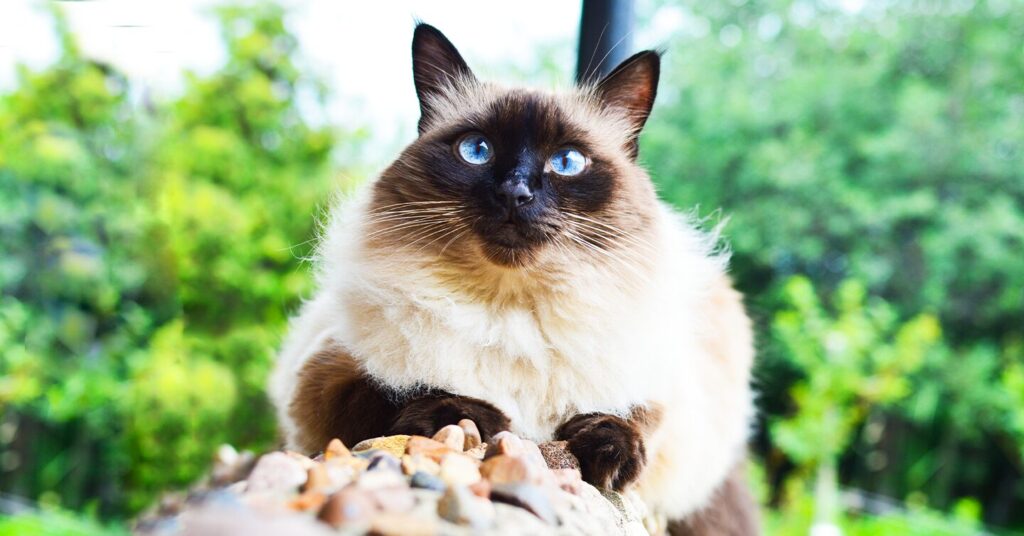
Often called the “long-haired Siamese,” Balinese cats are affectionate, vocal, and intelligent. They’re known to produce significantly less Fel d 1 protein than other breeds, making them a favorite for allergy-prone cat lovers. Despite their silky coats, they don’t shed much and are easy to groom.
Siberian

Don’t let their thick, majestic fur fool you — Siberians are one of the most hypoallergenic cat breeds. Studies have shown that many Siberians naturally produce lower levels of Fel d 1, and they’re also friendly, loyal, and great with kids.
Bengal
Bengals have short, dense coats with a signature leopard-like pattern. Their pelt-like fur requires minimal grooming and sheds less dander. They’re energetic and playful, making them a good choice for active households.
Oriental Shorthair
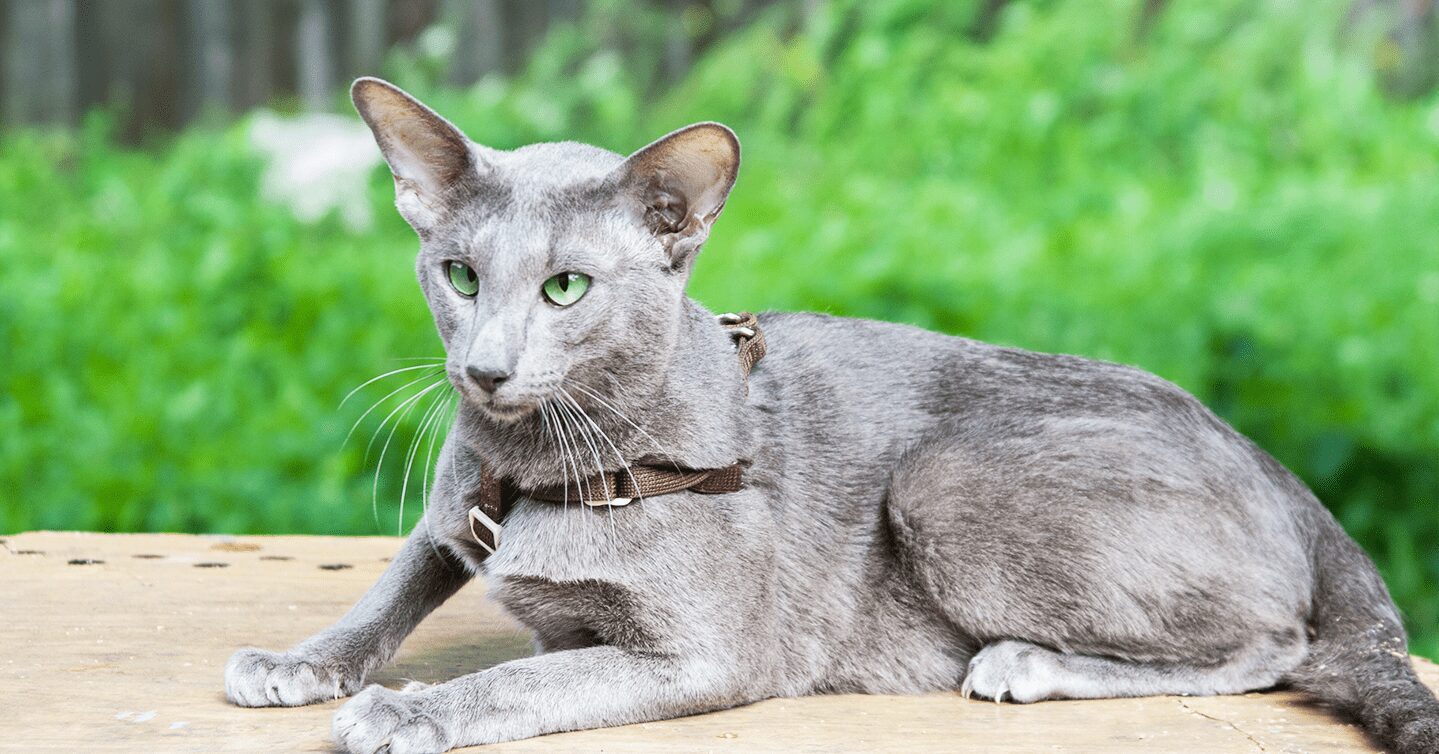
With their sleek bodies and large, expressive ears, Oriental Shorthairs are both elegant and mischievous. Their short, fine coats shed minimally, which helps reduce the spread of allergens around the home.
Devon Rex
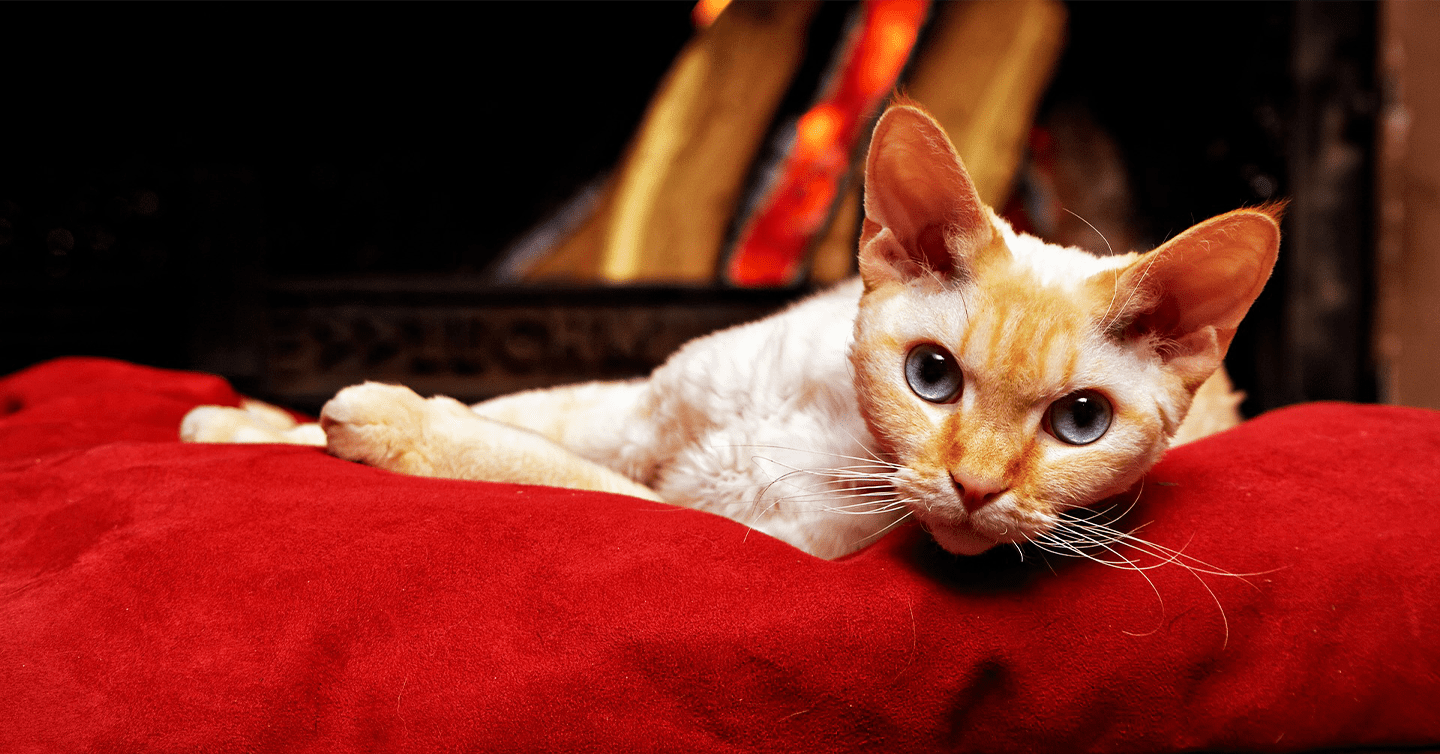
Similar to the Cornish Rex but with even sparser curls, the Devon Rex is playful, people-oriented, and incredibly soft to the touch. Their minimal shedding makes them a strong contender for allergy-friendly homes.
Cornish Rex
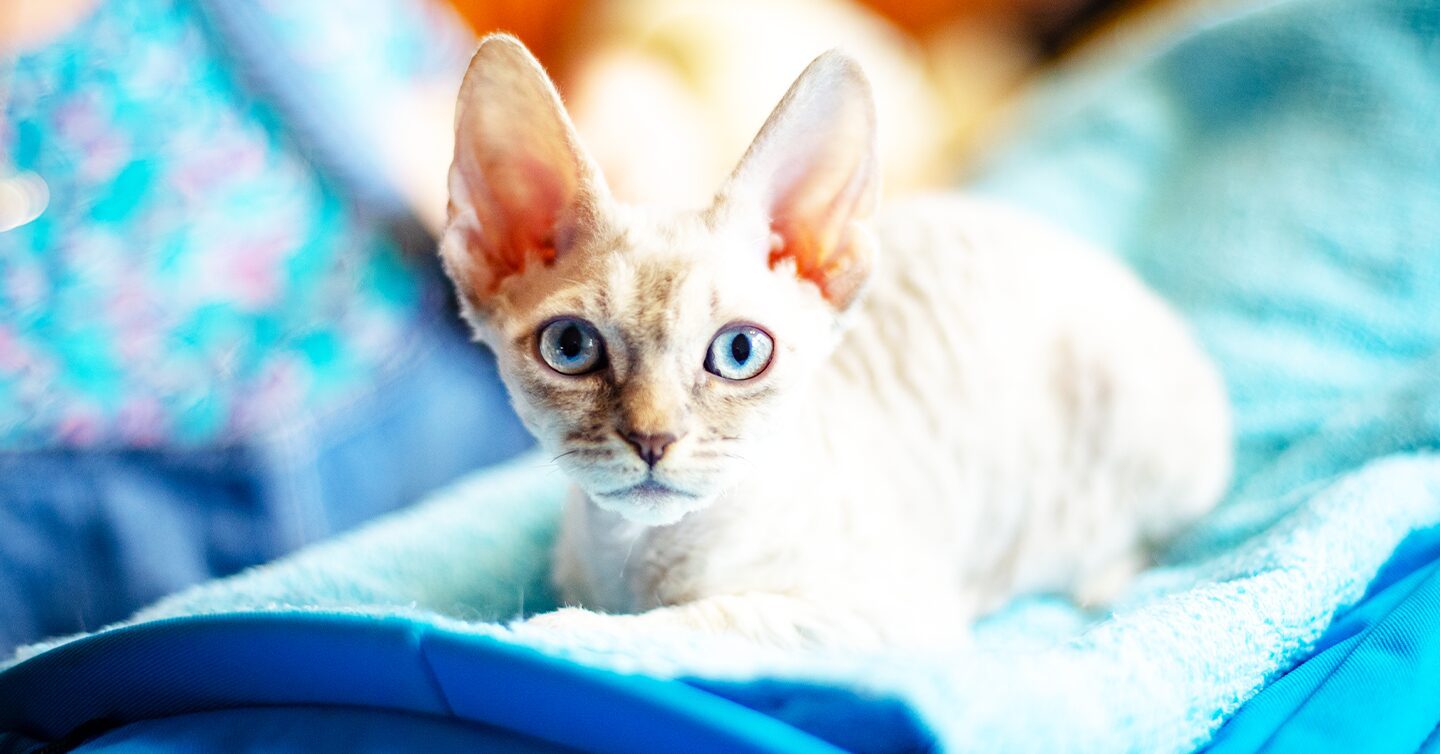
Unlike most cats, the Cornish Rex has only the soft undercoat layer of fur, called the “down.” This means they shed very little, and their short, wavy coat is easy to maintain. They’re outgoing, curious, and love human attention.
Javanese
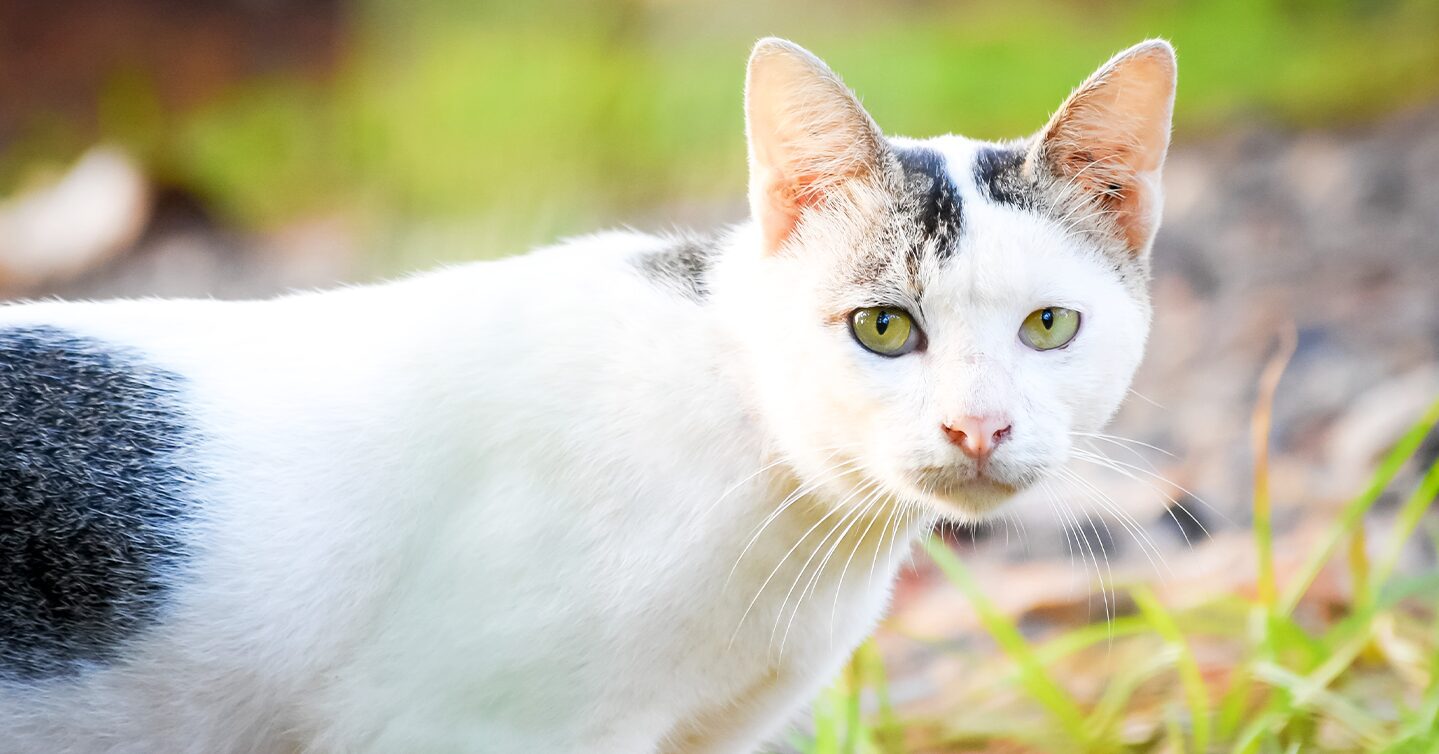
The Javanese are known to be one of the lowest-shedding hypoallergenic cat breeds. While they have a longer coat, regular brushing will help minimize allergens and avoid matting.
Originating from a cross between a Balinese and a Colorpoint Shorthair, Javanese are Siamese-like cats known for their vocalness. These chatty cats might talk back when spoken to or start chatting for no reason. Javanese cats are also smart and athletic. They’re excellent jumpers and love to use their curiosity, exploring cabinets or drawers if they can.
Sphynx

While the famous hairless Sphynx doesn’t have fur to trap allergens, they still produce Fel d 1 on their skin. Regular bathing helps reduce oil and dander buildup. Sphynx cats are affectionate, social, and surprisingly warm cuddle-buddies.
Burmese
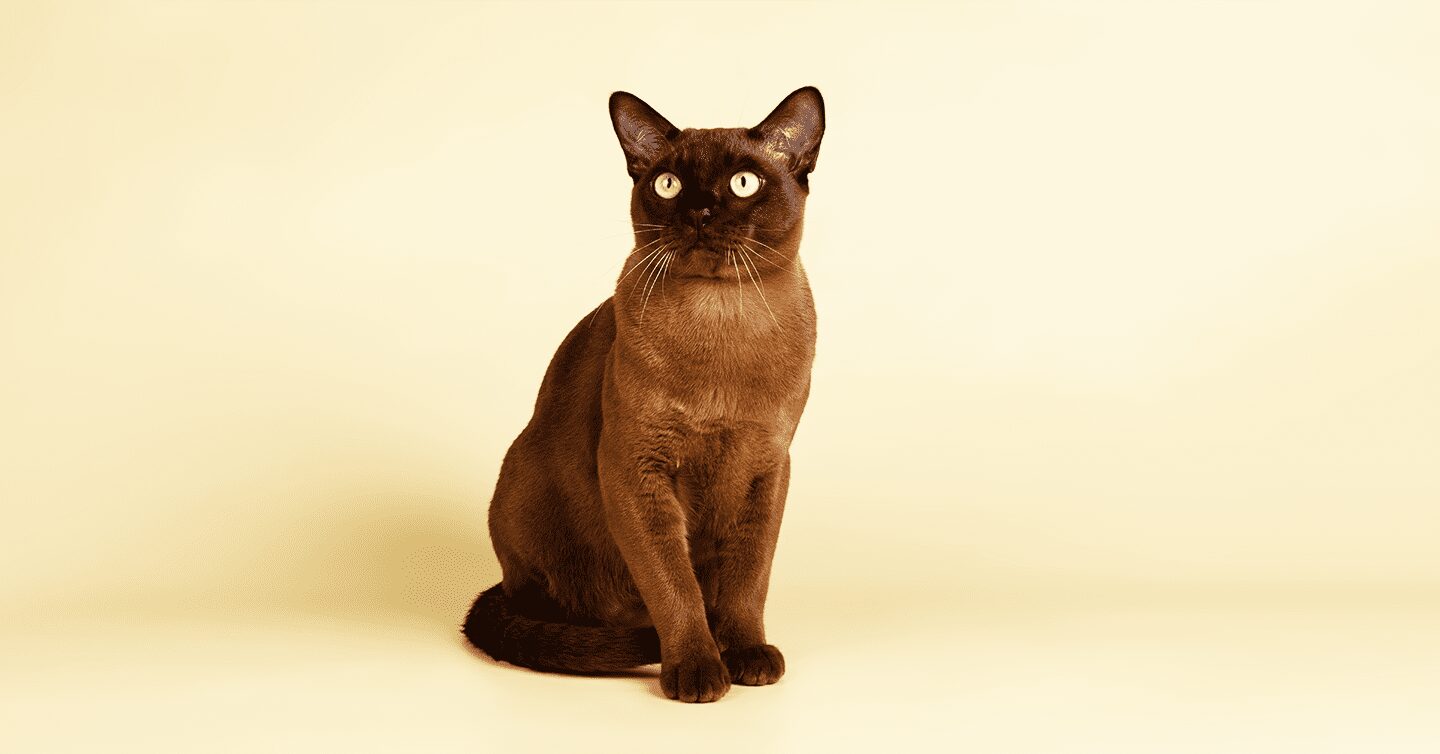
The Burmese is a short-haired, low-shedding breed with a sleek coat that releases less dander. They’re people-oriented, intelligent, and love being the center of attention.
Ocicat
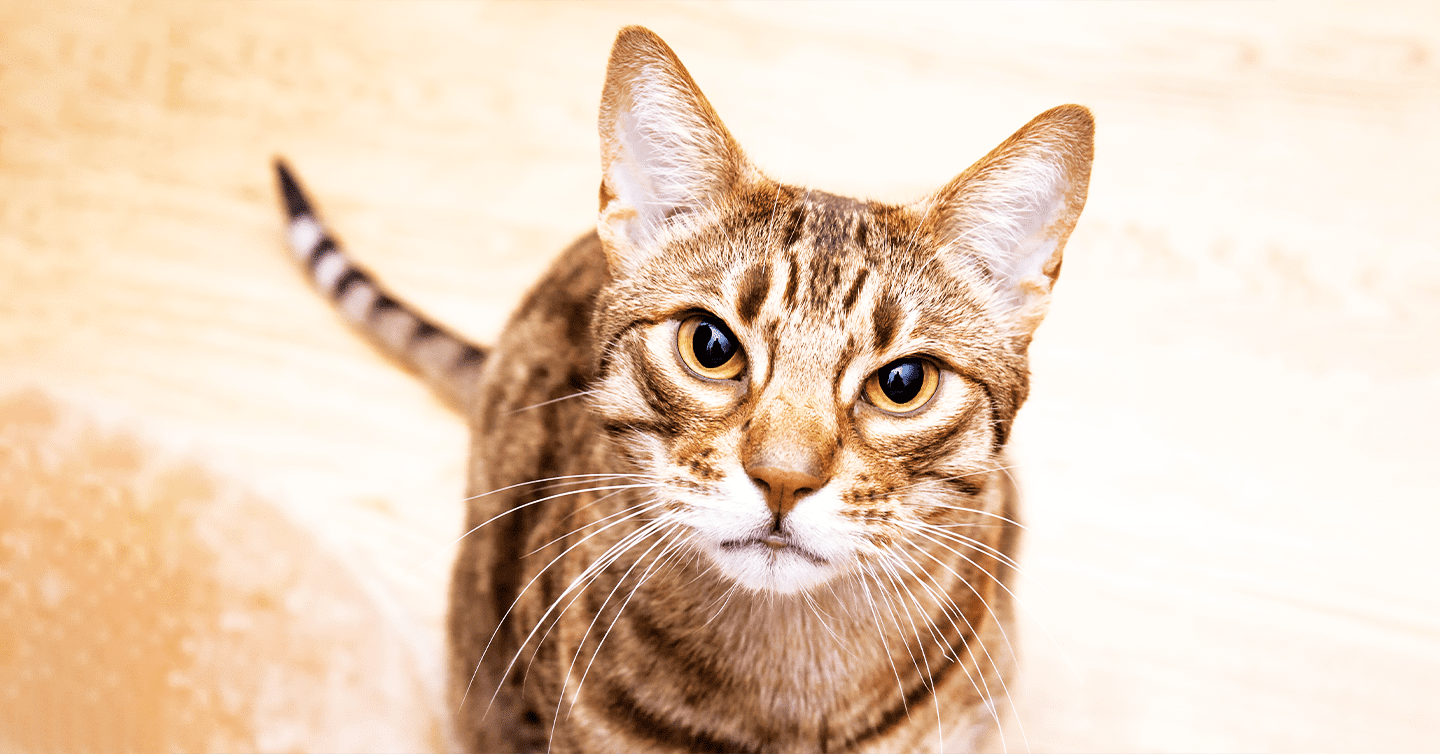
Known for their spotted, wild appearance, Ocicats are fully domesticated and low-shedding. They have smooth, tight coats that don’t release as much dander into the air as other breeds.
Russian Blue

This stunning silver-blue cat is calm, loyal, and known to produce lower-than-average Fel d 1 levels. Their double coat is soft and dense but not prone to heavy shedding.
Snowshoe
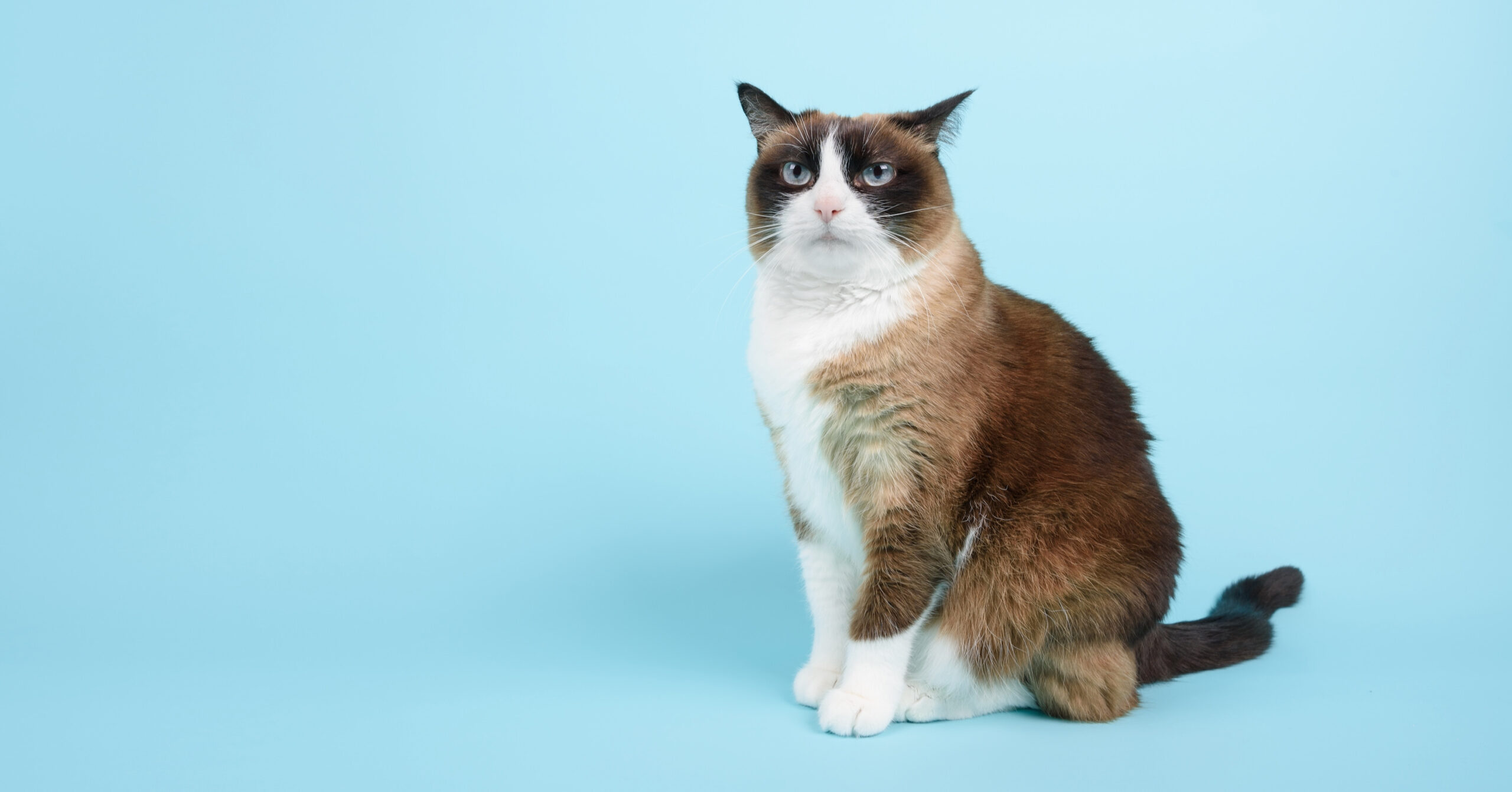
The Snowshoe offers cat lovers (and allergy sufferers) another great option. They have a short coat, no undercoat, and little shedding.
Snowshoes also love water, so they enjoy bath time. These cats are friendly and affectionate, often demanding attention from their families. They get along well with children and other pets, too.
Siamese
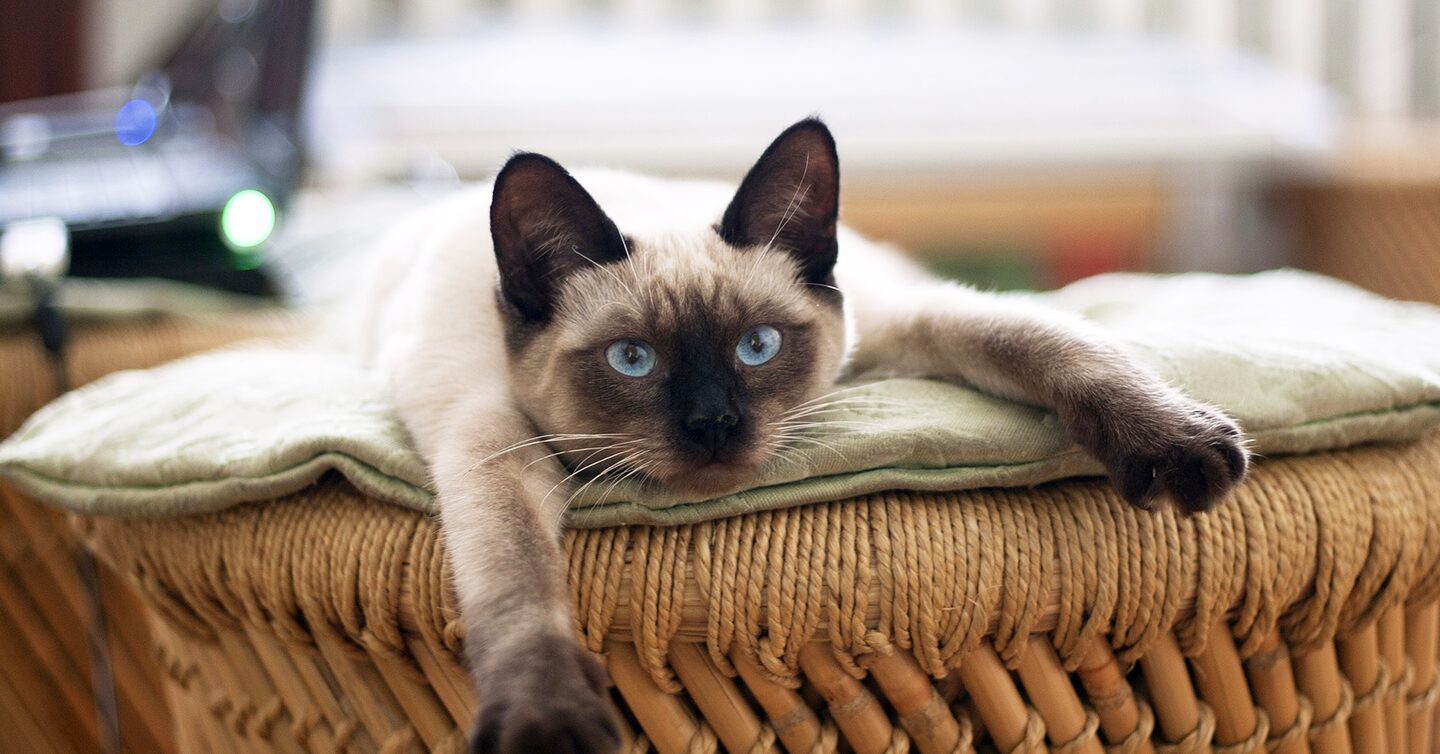
The gorgeous Siamese is one of the most popular cat breeds today. But, are Siamese cats hypoallergenic? Some breeders believe that these cats produce less of the Fel d 1 protein, but the evidence is anecdotal. However, because they're known for light shedding, they could be a good match for people with mild allergies.
While not truly hypoallergenic, as no cat is, this breed has a relatively short coat. Owners should brush this cat weekly, although this cat may enjoy more grooming sessions since they thrive on attention.
Siamese are known for their distinctive features, including blue eyes and large ears. They tend to be chatty and love being around their families.
Allergy management with hypoallergenic cats
Even if you bring home one of the most hypoallergenic cat breeds, managing allergens is an ongoing process. You, your cat, and your environment all play a part in keeping symptoms under control, but the overall goal isn’t perfection; it’s comfort. Here’s how to create a home where you and your feline friend can happily coexist.
Regular grooming and bathing
Grooming helps remove loose hair, saliva, and dander, the main carriers of the Fel d 1 protein. Brush your cat once or twice a week with a grooming mitt or dander-reducing brush, ideally outdoors or in a well-ventilated area. You may need to wear a mask or delegate this task if you are exceptionally allergic. If your cat tolerates water, baths every 2 to 4 weeks can dramatically cut down allergen levels. For cats who hate water, waterless shampoos or hypoallergenic pet wipes are a great alternative for wiping down fur and removing buildup between baths.
Clean your home strategically
Even low-shedding cats can spread allergens around the home. Fel d 1 particles are lightweight and sticky, so they cling to walls, furniture, bedding, and clothes for weeks. Combat this by vacuuming with a HEPA filter at least twice weekly, mopping hard floors often, and washing both your bedding and your cat’s bedding in hot water every week. Steam-cleaning furniture and carpets a few times a year also helps remove allergens trapped deep in fibers.
When possible, choose furniture and flooring that are easy to clean, such as hardwood, tile, and leather, as they tend to hold fewer allergens than carpet, fabric upholstery, or heavy curtains.
Use air purifiers and improve ventilation
Because cat allergens are airborne, air purification is one of the best long-term solutions. HEPA air purifiers can trap microscopic particles, including dander and hair, before they circulate. Place purifiers in the rooms where your cat spends the most time, and replace filters regularly.
Also, change your HVAC filters monthly and keep windows cracked for airflow when possible. Maintaining moderate indoor humidity with a humidifier can also prevent dry air from carrying allergens throughout your home.
Create cat-free zones
Give yourself an allergen-free retreat by designating certain areas — especially your bedroom or home office — as cat-free zones. Keep doors closed, use washable bedding covers, and add a small air purifier in those spaces. You might also consider making furniture off-limits for your cat. It can be tough to say no to those big, beseeching eyes, but your immune system will thank you.

Be proactive in managing your allergies
Even with a hypoallergenic breed, some allergen exposure is unavoidable. Over-the-counter antihistamines, nasal sprays, and antihistamine eye drops can ease mild symptoms, while immunotherapy (allergy shots) may help modulate your immune system for more lasting relief.
Other small habits go a long way, like washing your hands after petting your cat, refraining from touching your face, changing clothes after playtime, and wearing a mask when brushing your cat.
Support skin and coat health through diet
Healthy skin equals less shedding, and less shedding means fewer allergens. Feed your cat a high-quality diet rich in omega-3 fatty acids to support coat hydration and reduce flaky skin. You can also talk to your veterinarian about skin and coat supplements, such as fish oil or dander-reducing chews.
Keep your cat well-hydrated and schedule regular veterinary visits to catch any skin or allergy issues early. A comfortable, healthy cat will naturally produce fewer allergens.
Explore modern allergy aids
New advances in feline nutrition are making allergy management easier than ever. Some cat foods are now formulated to help neutralize the Fel d 1 protein at its source by binding to the allergen in saliva so less of it spreads through grooming. Talk to your veterinarian about whether one of these diets (like Purina Pro Plan LiveClear) might be a good option for your cat’s needs and your allergy concerns.
Keep up with an allergy-friendly routine
Consistency is key. Brush your cat weekly, bathe or wipe them down every few weeks, wash bedding often, vacuum several times a week, and replace air filters monthly. Over time, these small habits add up to big relief, helping you breathe easier while still enjoying life with your favorite feline.
Choosing the right hypoallergenic cat breed for you
When choosing a cat who is good for allergies, consider both your allergy level and your lifestyle to determine the best fit for you. If you have mild allergies, breeds like the Balinese, Siberian, or Russian Blue may be manageable. If your allergies are moderate to severe, you might have more success with the Devon Rex, Cornish Rex, or Sphynx, which produce fewer allergens overall.
But personality matters just as much as physiology. A calm, low-maintenance cat might be better suited for first-time owners, while an energetic breed like the Bengal needs lots of playtime and stimulation to prevent behavioral issues.
It’s also smart to spend time with the breed before adopting. Visit a breeder or shelter, or see if a rescue volunteer can arrange a short visit. This gives your body a chance to react — or not — before you commit.
And remember: hypoallergenic doesn’t mean “maintenance-free.” You’ll still need to groom, clean, and stay on top of allergy management, but it’s absolutely worth it for the companionship you’ll gain.
Can you still be allergic to hypoallergenic dogs?
Just as with cats, there’s no such thing as a 100% hypoallergenic dog. Dogs produce their own allergenic proteins (mainly Can f 1 and Can f 2), and breeds labeled as “hypoallergenic” simply shed less hair and dander.
If your household includes both cats and dogs, choosing low-shedding breeds of both can help minimize allergen buildup. Pairing this with diligent cleaning and grooming will make your environment much more comfortable for allergy-prone family members.
Looking for a hypoallergenic dog to match your low-allergy cat? Pumpkin’s got you covered. Check out our rundown of the least allergenic pups here.
Proactive management for comfortable living
Living with cat allergies doesn’t necessarily mean living without cats. By choosing a breed that produces fewer allergens, and taking proactive steps to manage your environment, you can create a home where everyone (including your nose) can breathe easy.
It’s about balance: understanding your allergies, choosing the right breed, and committing to regular cleaning and care. Whether it’s a sleek Russian Blue or a playful Devon Rex, the right cat can bring endless joy and companionship, with fewer sneezes along the way.
If you’re ready to take the next step in pet parenthood, explore Pumpkin Cat Insurance plans and protection options designed to keep your new feline family member healthy from day one.
Fetch your free quote today.
FAQs: Hypoallergenic cat breeds
What cats are hypoallergenic?
Breeds like the Balinese, Siberian, Bengal, Russian Blue, Devon Rex, and Sphynx are often considered hypoallergenic because they produce lower levels of Fel d 1 or shed less.
Can you be allergic to hypoallergenic cats?
Yes, since hypoallergenic doesn’t mean allergen-free. Sensitivity varies from person to person, and some allergy sufferers may still react mildly.
Are there big or miniature hypoallergenic cats?
Yes, hypoallergenic cats come in a range of sizes. Big hypoallergenic cats include Siberians and Bengals. Smaller or “miniature” options include the Cornish Rex and Devon Rex.
What are low-shedding or non-shedding cats?
Breeds with minimal undercoats or short, fine fur, like the Oriental Shorthair or Sphynx, shed very little and are easier to keep allergen-free.
References
American Lung Association — Pet Dander
American Kennel Club — Hypoallergenic Dog Breeds
Montgomery Veterinary Associates — Hypoallergenic Cats
The Journal of Allergy and Clinical Immunology — Sex Difference in Fel 1 d Production

